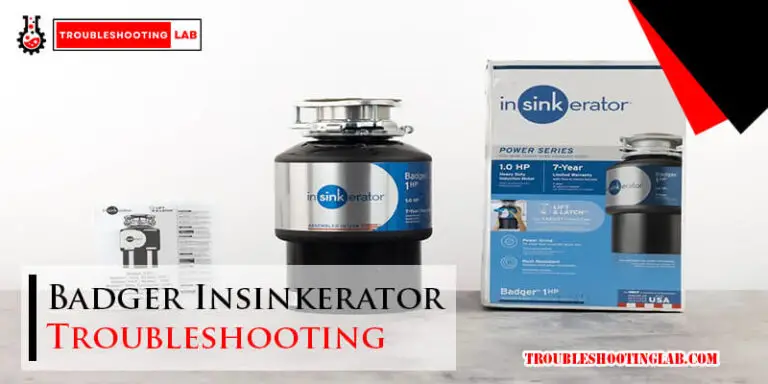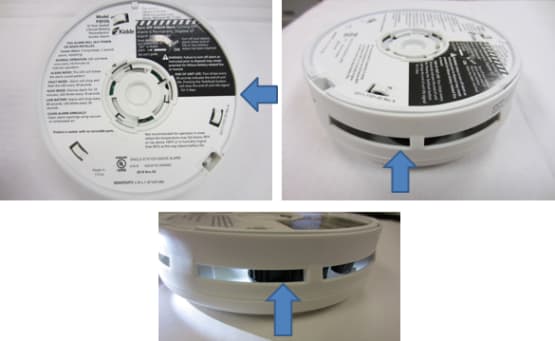John Deere Fuel System Troubleshooting: Ultimate Guide
To troubleshoot fuel system issues on a John Deere tractor, check for indications such as electrical noises, hard starting, a lack of responsiveness, or a sudden decrease in power. Bleed air out of fuel lines and tested the fuel delivery system by installing a pressure gauge and comparing the reading to manufacturer specifications.
Common causes of fuel system problems include a faulty fuel pump, clogged filters or lines, and leaks from loose connections or damaged parts. Consult an authorized diesel repair station for professional repair or replacement, if necessary. Additionally, it is important to check fuel flow at the supply pump and bleed the fuel system if needed.

Introduction To John Deere Fuel System Troubleshooting
Understanding The Importance Of A Properly Functioning Fuel System
Your John Deere equipment relies on a properly functioning fuel system to deliver the necessary fuel to the engine for efficient performance. The fuel system plays a vital role in ensuring that your equipment runs smoothly and efficiently. A malfunctioning fuel system can lead to power loss, decreased fuel efficiency, rough idling, and ultimately, equipment breakdown.
Having an understanding of the various components of the fuel system and how they work together is crucial to troubleshooting any issues that may arise. From the fuel pump to the injectors, each component plays a specific role in delivering the right amount of fuel to the engine. By gaining a clear understanding of the fuel system, you’ll be better equipped to identify and address any potential problems.
Identifying Common Signs Of Fuel System Issues
Being able to recognize the common signs of fuel system problems is essential for timely troubleshooting. Some of the telltale signs include:
- Electrical clicking or whining noise
- Hard starting or difficulty in getting the engine to turn over
- Lack of responsiveness or sluggish acceleration
- Sudden decrease in power
These signs may indicate fuel pump issues, clogged fuel filters, fuel line leaks, or injector problems. Ignoring these symptoms can lead to more severe damage to your equipment and costly repairs. Therefore, it is crucial to address any potential fuel system issues as soon as possible.
Why Troubleshooting The Fuel System Is Crucial For Maintaining The Performance Of Your John Deere Equipment
Troubleshooting the fuel system is of utmost importance for maintaining the performance and longevity of your John Deere equipment. A properly functioning fuel system ensures that the engine receives the right amount of fuel for optimal performance and efficiency.
Regular fuel system troubleshooting and maintenance can help you:
- Prevent power loss and decreased fuel efficiency by identifying and rectifying any issues that may be hindering the fuel delivery process.
- Protect your equipment from costly breakdowns and repairs.
- Maximize the lifespan of your John Deere equipment by ensuring that the engine receives the necessary fuel.
By prioritizing fuel system troubleshooting and maintenance, you can ensure that your John Deere equipment performs at its best, allowing you to tackle your tasks efficiently and effectively.
Troubleshooting Fuel Delivery Issues
When it comes to John Deere fuel system troubleshooting, one of the key areas to focus on is fuel delivery. If you’re experiencing issues with fuel not reaching the engine properly, there are a few steps you can take to diagnose and resolve the problem. In this section, we’ll discuss how to check for clogged fuel filters, inspect fuel lines for leaks or blockages, test the fuel pump for proper functionality, and evaluate the condition of the fuel tank.
Checking For Clogged Fuel Filters
One of the first things to consider when troubleshooting fuel delivery issues in your John Deere equipment is the condition of the fuel filters. Over time, these filters can become clogged with dirt, debris, or contaminants, limiting the flow of fuel to the engine. To check for clogged filters:
- Locate the fuel filters on your John Deere equipment.
- Remove each fuel filter and inspect it for any signs of blockage or buildup.
- If the filter appears dirty or clogged, replace it with a new one.
- Make sure to install the new fuel filter correctly, following the manufacturer’s instructions.
Inspecting Fuel Lines For Leaks Or Blockages
In addition to clogged fuel filters, fuel lines can also contribute to fuel delivery issues. Leaks or blockages in the fuel lines can disrupt the flow of fuel to the engine, resulting in performance problems. To inspect the fuel lines:
- Visually inspect the fuel lines for any signs of leaks, such as dripping or wet spots.
- If you suspect a leak, use a fuel line pressure tester to identify the exact location.
- If any blockages are visible, use compressed air to clear them.
- Replace any damaged or faulty fuel lines to ensure proper fuel delivery.
Testing The Fuel Pump For Proper Functionality
The fuel pump plays a crucial role in delivering fuel from the tank to the engine. If the fuel pump is not functioning properly, it can cause fuel delivery issues in your John Deere equipment. To test the fuel pump:
- Consult the manufacturer’s manual to locate the fuel pump.
- Disconnect the fuel line from the pump.
- Connect a fuel pressure gauge to the fuel pump outlet.
- Start the engine and observe the fuel pressure reading on the gauge.
- If the pressure reading is not within the recommended range, the fuel pump may need to be replaced.
Evaluating The Condition Of The Fuel Tank
The fuel tank is another component that can contribute to fuel delivery issues. Over time, debris or sediment can accumulate in the fuel tank, causing clogs and restricting fuel flow. To evaluate the condition of the fuel tank:
- Inspect the fuel tank for any signs of rust or corrosion.
- If rust or corrosion is present, drain the fuel tank and clean it thoroughly.
- Remove any debris or sediment from the fuel tank.
- Ensure that the fuel tank is properly sealed to prevent any air or moisture from entering.
By checking for clogged fuel filters, inspecting fuel lines for leaks or blockages, testing the fuel pump, and evaluating the condition of the fuel tank, you can troubleshoot fuel delivery issues in your John Deere equipment effectively. Remember to follow the manufacturer’s guidelines and consult a professional if needed to ensure an accurate diagnosis and resolution of the problem.
Diagnosing Fuel Injector Problems
Recognizing Symptoms Of Faulty Fuel Injectors
Diagnosing fuel injector problems is crucial to resolving fuel system issues in your John Deere equipment. Faulty fuel injectors can wreak havoc on the overall performance and efficiency of your engine. There are several symptoms that can indicate potential problems with your fuel injectors:
- Engine misfires: If you notice your engine misfiring or running rough, it could be a sign of a malfunctioning fuel injector. Misfires occur when the injector fails to deliver the right amount of fuel into the combustion chamber.
- Poor fuel economy: Faulty injectors can cause poor fuel atomization, leading to decreased fuel efficiency. If you find yourself making more frequent trips to the fuel pump, it could be worth inspecting your fuel injectors.
- Power loss: A decrease in engine power output can also result from faulty fuel injectors. When injectors become clogged or fail to spray fuel properly, it can hinder the engine’s performance.
- Excessive smoke: If you notice black smoke coming from your exhaust, it could be a sign of an injector delivering too much fuel. On the other hand, a lack of fuel may result in white or blue smoke.
- Irregular idle: Unstable or rough idling can be caused by a faulty fuel injector. The injector’s inability to deliver the correct amount of fuel can disrupt the engine’s idle speed.
Conducting A Fuel Injector Flow Test
If you suspect a problem with your fuel injectors, conducting a flow test can help pinpoint the issue. Here are the steps to perform a fuel injector flow test:
- Prepare your equipment. Ensure that your vehicle or equipment is in a well-ventilated area and the engine is cool.
- Disconnect the fuel injectors: Remove the fuel injectors from the engine, following the manufacturer’s guidelines.
- Set up the flow test equipment. Connect the flow test equipment to the fuel injectors. The equipment will measure the amount of fuel flowing through each injector.
- Perform the test: Start the engine and activate the flow test equipment. Observe the readings for each injector and compare them to the manufacturer’s specifications.
- Analyze the results: If the readings deviate significantly from the specified values, it may indicate a problem with the fuel injector that needs to be addressed.
Cleaning Or Replacing Fuel Injectors
If your fuel injector flow test reveals issues, such as clogging or inefficient fuel spray patterns, you may need to clean or replace the injectors. Here are the options:
- Fuel injector cleaning: Using specialized cleaning solutions and equipment, you can attempt to remove deposits and buildup from the fuel injectors. This process can improve fuel atomization and restore proper injector function.
- Fuel injector replacement: In more severe cases, cleaning may not be enough to restore optimal performance. Replacing the fuel injectors with new ones can ensure consistent fuel delivery and combustion.
Addressing Issues With Fuel Pressure Regulators
Fuel pressure regulators play a crucial role in maintaining optimal fuel pressure throughout your John Deere fuel system. Here’s how to address potential issues:
- Inspect for leaks: Check for any visible signs of fuel leaks around the fuel pressure regulator. Leaks can compromise the system’s fuel pressure and should be addressed immediately.
- Test the fuel pressure: Using a fuel pressure gauge, measure the pressure in the fuel system. Compare the readings to the manufacturer’s specifications. Low or inconsistent pressure readings may indicate a faulty fuel pressure regulator.
- Replace the fuel pressure regulator. If testing reveals that the fuel pressure regulator is not functioning correctly, replacing it is necessary to ensure proper fuel pressure regulation.
Dealing With Fuel System Electrical Problems
Troubleshooting Fuel System-related Electrical Components
When it comes to John Deere fuel system troubleshooting, it’s essential to address any issues related to fuel system electrical components. These components play a crucial role in ensuring the proper functioning of the fuel system and can cause various problems if not functioning correctly.
One common indication of fuel system electrical problems is the presence of an electrical clicking or whining noise when starting the engine. This noise could indicate issues with relays, switches, or other electrical components within the fuel system.
To troubleshoot these electrical components, start by checking the relays and switches. These components control the flow of electricity within the fuel system and can be responsible for issues such as fuel pump malfunctions or fuel flow disruptions.
Testing fuel system relays and switches is relatively straightforward. You can use a multimeter or a test light to ensure that the electrical connections are intact and the switches are functioning correctly. If any faults are detected, replacement may be necessary to resolve the electrical problem.
Checking Wiring Connections And Harnesses
Another crucial aspect of dealing with fuel system electrical problems is checking the wiring connections and harnesses. Faulty or loose connections can lead to intermittent electrical disruptions or the complete failure of certain fuel system components.
To check the wiring connections and harnesses, visually inspect them for any signs of wear, corrosion, or loose connections. Ensure that all connectors are securely attached and free from dirt or debris. Loose or damaged connectors should be repaired or replaced to ensure proper electrical flow within the fuel system.
In some cases, it may be necessary to refer to the wiring diagram provided by John Deere to identify the correct connections and troubleshoot any wiring-related issues.
Resolving Issues With Fuel Level Sensors And Sending Units
The fuel level sensors and sending units in a John Deere fuel system are responsible for accurately measuring the fuel level in the tank and sending this information to the fuel gauge. If these sensors or sending units malfunction, it can lead to inaccurate fuel level readings or even a complete failure of the fuel gauge.
To resolve issues with fuel level sensors and sending units, start by inspecting the connections and wiring associated with these components. Ensure that the connections are secure and free from any corrosion or damage.
If the wiring connections are intact, you may need to test the sensors or send units themselves. This can be done using specialized diagnostic equipment or by referring to the manufacturer’s specifications and performing resistance or voltage tests.
If any faults are detected with the fuel level sensors or sending units, they will need to be replaced to restore proper fuel level measurement and gauge functionality.
Preventive Maintenance For Your John Deere Fuel System
Proper maintenance of your John Deere fuel system is essential for optimal performance and longevity of your equipment. By implementing a preventive maintenance routine, you can prevent fuel system issues and ensure your equipment runs smoothly. In this article, we will explore some key preventive measures that you can take to keep your John Deere fuel system in top condition.
Regularly Inspecting And Cleaning Fuel Filters
Fuel filters play a crucial role in preventing contaminants from entering your John Deere fuel system. Over time, these filters can become clogged, hindering fuel flow and affecting engine performance. To prevent this, it is important to regularly inspect and clean your fuel filters. This should be done at regular intervals, as specified in your equipment’s maintenance manual.
During the inspection, carefully examine the filters for any signs of dirt, debris, or blockage. If you notice any issues, it is recommended to clean or replace the filters promptly. Keeping your fuel filters clean will ensure that only clean fuel reaches the engine, allowing it to operate at its full potential.
Flushing The Fuel System At Recommended Intervals
In addition to regular filter maintenance, flushing the fuel system is another preventive measure that can help maintain its efficiency. Flushing removes any accumulated deposits, water, or residue that may be present in the fuel system.
Consider flushing your John Deere fuel system at recommended intervals or whenever you notice a decrease in performance. This process involves using a high-quality fuel system cleaner that is designed for your specific equipment. Follow the instructions provided by the manufacturer to properly flush the system and ensure optimal results.
Using High-quality Fuel Additives To Prevent Fuel System Issues
Another effective preventive measure for your John Deere fuel system is to use high-quality fuel additives. These additives are specially formulated to improve fuel quality, enhance engine performance, and prevent fuel system issues.
When choosing a fuel additive, opt for a product that is compatible with your equipment and meets the manufacturer’s recommendations. Adding the additive to your fuel regularly can help prevent fuel system problems such as clogging, corrosion, and fuel degradation.
Storing Equipment With Proper Fuel System Maintenance In Mind
Proper storage is essential for maintaining the condition of your John Deere equipment, including its fuel system. When storing your equipment, it is crucial to consider fuel system maintenance to prevent any issues from arising during the dormant period.
Before storage, ensure that the fuel tank is filled to the recommended level. This helps prevent condensation and moisture buildup inside the tank, which can lead to fuel contamination. Additionally, you may consider adding a fuel stabilizer to the tank to further protect the fuel quality during storage.
Overall, by implementing these preventive measures, you can ensure the longevity and optimal performance of your John Deere fuel system. Regularly inspecting and cleaning fuel filters, flushing the fuel system, using high-quality fuel additives, and storing equipment with proper fuel system maintenance in mind will significantly reduce the likelihood of encountering fuel system issues and help your equipment operate at its best.
Frequently Asked Questions
How Do You Diagnose A Fuel System Problem?
To diagnose a fuel system problem, look out for signs like electrical noise, hard starting, lack of responsiveness, or a sudden loss of power. Bleed air out of fuel lines and tested the fuel delivery system for proper pressure. Common causes of fuel system issues include a faulty fuel pump, clogged filters or lines, or leaks.
How Do You Bleed Air Out Of Fuel Lines?
To bleed air out of fuel lines, follow these steps: 1. Locate the fuel bleed valve or screw on the fuel system. 2. Loosen the valve or screw to release any air trapped in the lines. 3. Keep loosening until fuel, not air, comes out. 4. Tighten the valve or screw once the fuel starts flowing. 5. Start the engine and check for proper fuel flow.
How Do You Test A Fuel Delivery System?
To test a fuel delivery system, start the car and let it idle. Install a fuel pressure gauge and run the pump to note the pressure reading. Compare it to the manufacturer’s specification. If the pressure is low, address the problem.
What causes fuel system issues?
Fuel system issues are often caused by problems with the fuel pump, such as clogs in the fuel filters or lines. Leaks can also occur due to loose connections or damaged parts. These issues can lead to a decrease in power, hard starting, or a lack of responsiveness in the engine.
Can a clogged fuel filter cause fuel system issues?
A clogged fuel filter can restrict fuel flow and lead to fuel system issues such as hard starting and decreased power.
Conclusion
To troubleshoot fuel system issues with your John Deere equipment, there are several steps you can take. Start by checking for common signs of a problem, such as unusual noises or decreased power. Bleeding the fuel system and testing the fuel delivery are also important diagnostic steps.
It’s important to address any issues with the fuel pump, filters, or lines, as these are often the root cause of fuel system problems. Consulting an authorized diesel repair station can provide expert guidance for repair or replacement. Follow these steps to ensure your John Deere equipment is running smoothly and efficiently.






